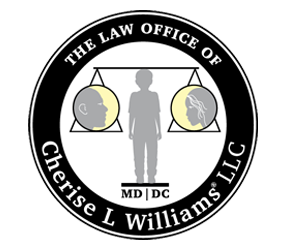Understanding the Family Law Litigation Process: A Step-by-Step Guide
September 4, 2024
Understanding the Family Law Litigation Process: A Step-by-Step Guide
Family law litigation is often a last resort when amicable resolutions are unattainable. This process, while necessary in certain circumstances, can be lengthy, complex, and emotionally draining. As a family law lawyer with over 20 years of experience, my priority is always to protect my client's best interests, particularly when children are involved. Understanding the process can help set realistic expectations and provide clarity during what is often a challenging time.
What Happens During a Litigated Family Law Process?
When a family law matter—whether it involves divorce, child custody, or support—cannot be resolved through negotiation or mediation, litigation becomes the path forward. Litigation is essentially the process of taking a dispute to court, where a judge will make the final decisions.
Here’s a general overview of what happens during a litigated family law case:
1.Initial Consultation and Case Evaluation
The process begins with an initial consultation, where I meet with the client to discuss the details of their case. During this meeting, we explore the issues at hand, such as property division, spousal support, child custody, and any other concerns. I also explain the litigation process, the potential outcomes, and what they can expect moving forward.
2.Filing the Petition
Once the decision to litigate is made, the first official step is to file a petition with the court. This document outlines the issues and the relief being sought (e.g., divorce, custody, or support orders). The other party (the respondent) is then served with these documents and given an opportunity to respond.
The process begins with an initial consultation, where I meet with the client to discuss the details of their case. During this meeting, we explore the issues at hand, such as property division, spousal support, child custody, and any other concerns. I also explain the litigation process, the potential outcomes, and what they can expect moving forward.
2.Filing the Petition
Once the decision to litigate is made, the first official step is to file a petition with the court. This document outlines the issues and the relief being sought (e.g., divorce, custody, or support orders). The other party (the respondent) is then served with these documents and given an opportunity to respond.
3.Response from the Other Party
The respondent typically has 30 days to file a response. Their response will outline their position on the issues raised in the petition. This stage sets the tone for the litigation and helps identify the points of agreement and contention.
4.Discovery Process
Discovery is a critical phase in litigation, where both parties exchange relevant information and documents. This can include financial records, communication logs, and any other evidence that may be pertinent to the case. Depositions (sworn statements taken under oath) may also be conducted. The goal of discovery is to gather all the facts and evidence to build a strong case.
5.Pre-Trial Motions and Hearings
Before the trial, there may be several pre-trial motions and hearings. These are opportunities to address preliminary issues, such as temporary orders for child custody or spousal support, or to resolve procedural matters. This stage can be time-consuming, as it often requires several court appearances.
6.Settlement Negotiations
Even during litigation, settlement negotiations often continue. In fact, many cases settle before reaching trial. Settlement discussions can happen at any point, and if an agreement is reached, the terms are formalized, and the case is resolved without the need for a full trial.
7.Trial Preparation
If the case does not settle, we move into the trial preparation phase. This involves organizing evidence, preparing witnesses, and developing arguments to present in court. It’s a meticulous process that requires significant time and attention to detail to ensure the strongest possible presentation of the case.
8.The Trial
During the trial, both parties present their case before a judge. This includes opening statements, witness testimonies, cross-examinations, and closing arguments. The judge will then review all the evidence and make a ruling on the issues at hand. Trials can range from a single day to several weeks, depending on the complexity of the case.
9.Post-Trial Matters
After the trial, the judge will issue a final order or judgment. This may include specific instructions or deadlines for actions such as the transfer of property or the payment of support. In some cases, there may be post-trial motions or appeals if one party believes there was an error in the court’s decision.
How Time-Consuming Is Litigation?
Litigation is often more time-consuming than other forms of dispute resolution. From the initial filing to the final judgment, the process can take anywhere from several months to over a year, depending on the complexity of the case, the court’s schedule, and the willingness of both parties to settle. The discovery process alone can take several months, especially if there are disputes over what information must be disclosed. Court dates can be spread out over weeks or months, further extending the timeline.
The Usual Timeline for a Family Law Litigation Process
While every case is unique, the typical timeline for a family law litigation process might look something like this:
1. Initial Filing: 1-2 months
2. Response from the Other Party: 1 month
3. Discovery Process: 3-6 months
4. Pre-Trial Motions and Hearings: 2-4 months
5. Trial Preparation: 1-2 months
6. Trial: 1-3 weeks
7. Post-Trial Matters: 1-3 months
This timeline is just an estimate
and can vary significantly based on the circumstances of each case.
Protecting Your Interests
Throughout the litigation process, my role as your lawyer is to advocate for your stated interests. This means not only striving for the best possible outcome but also guiding you through each step with transparency and care. When children are involved, the stakes are even higher, and every decision is made with their well-being as the top priority.
Final Thoughts
Litigation is not an easy path, but it is sometimes necessary to achieve a fair and just outcome. Understanding the process can help alleviate some of the uncertainty and stress that comes with it. As your lawyer, my commitment is to navigate these legal waters on your behalf, ensuring that your rights and interests are fully protected at every turn.
If you have questions or need guidance on a family law matter, don’t hesitate to reach out. Together, we can work towards the best possible resolution for you and your family.
More Posts

